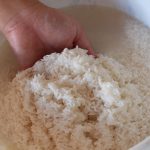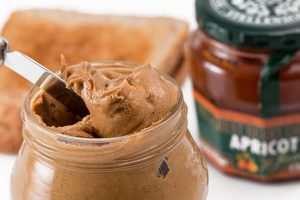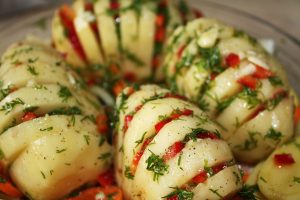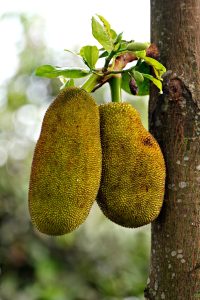
Ganesh Chaturthi commemorates the birth of Lord Ganesha, the offspring of Lord Shiva and Goddess Parvati. It is traditionally observed on the fourth day (Chaturthi) of the Bhadrapada month in the Hindu calendar (August-September). This festival honors Ganesha’s divine arrival and his symbolism as the remover of obstacles and the deity associated with new beginnings. It fosters unity among diverse communities, as families, neighbors, and friends gather to install Ganesha idols in their homes or communal areas (pandals) and engage in various rituals and prayers. The festival is particularly valued for its spirit of community and collective involvement. While it holds religious and cultural significance, Ganesh Chaturthi is also a celebration of food, featuring an array of special dishes prepared as offerings (prasad) to Lord Ganesha. Food plays a vital role in the celebrations, with numerous sweet and savory treats made, each carrying its unique importance. Here’s a look at the foods closely associated with Ganesh Chaturthi.
- Ukadiche Modak- For preparing the filling- Heat 1 teaspoon ghee in a pan over medium flame, add 1 cup freshly grated coconut and saute for a minute. Add 3/4 cup grated jaggery to the pan, mix well and cook over low flame until the jaggery melts and incorporate with the grated coconut. When the mixture starts to thicken add 1/2 teaspoon cardamom powder and 1 teaspoon poppy seeds, mix well and cook for 2 minutes. Switch off the heat and cool the filling. For the modak- Prepare a dough- Boil 1 cup of water, add a pinch of salt and 1 teaspoon ghee. Add 1 cup rice flour slowly to the water while stirring constantly. There should be no lumps. Immediately cover the pan and let it steam over low flame for a minute. After turning off the heat, take the pot and allow the dough to cool slightly until it is safe to handle. Thoroughly knead the dough to create a smooth, silky, and non-sticky texture. Make small lemon-sized balls out of the dough. Maintain a slightly thicker center and thinner margins. Spoon a heaping spoonful of the cooked coconut-jaggery filling into the disc’s center. To shape the modak, gently gather the disc’s edges to the center to create pleats, and then pinch them together at the top. Make sure it is correctly sealed. To prepare modaks, first grease a steaming plate or line it with banana leaves or muslin cloth to avoid sticking. Arrange the modaks on the plate, ensuring there is space between them. Steam the modaks in a steamer or pressure cooker without the whistle for 10-15 minutes on medium heat until they appear slightly translucent and glossy. After steaming, remove the modaks and allow them to cool slightly before serving.
- Shrikhand- To prepare Hung Curd, start by placing a muslin cloth or fine strainer over a large bowl. Pour 1 kg full-fat yogurt into the cloth or strainer and tie it securely or place a weight on top. Allow it to hang or strain in the refrigerator for 6-8 hours or overnight to eliminate excess whey, resulting in thick hung curd. Next, soak a pinch of saffron strands in 1-2 tablespoons of warm milk for 10-15 minutes to enhance their color and aroma. In a large mixing bowl, combine the hung curd with 1 /2 cup powdered sugar, adjusting the sweetness to your preference. Add 1/2 teaspoon cardamom powder and the saffron milk, mixing until the saffron is well integrated and the mixture reaches a creamy consistency. Finally, cover the bowl and refrigerate the Shrikhand for 2-3 hours to let the flavors develop. Garnish chill with sliced almonds, pistachio and a few strands of saffron.
- Sabudana (tapioca) khichdi- Rinse 1 cup sabudana under running water until it is clear to eliminate excess starch. Soak it in just enough water to cover for 4-6 hours or overnight, then drain excess water. In a pan, heat 2 tablespoons ghee or oil over medium heat, add 1 medium-sized diced potato, and sauté until golden and cooked. Remove and set aside. In the same pan, add more ghee or oil if necessary, then add 1 teaspoon of cumin seeds and let them sizzle. Next, add chopped 2-3 green chilies and 8-10 curry leaves, sauté briefly, then incorporate the soaked sabudana. Mix in 1/4 cup roasted coarsely ground peanuts, sautéed potatoes, salt, and sugar if desired. Cook on low heat for 5-7 minutes until sabudana becomes translucent and is well-coated with spices. Once done, turn off the heat and squeeze 1 tablespoon of lemon juice into the mixture. Garnish with 2 tablespoons of chopped coriander leaves and serve hot, either with yogurt or on its own.
-Triparna







